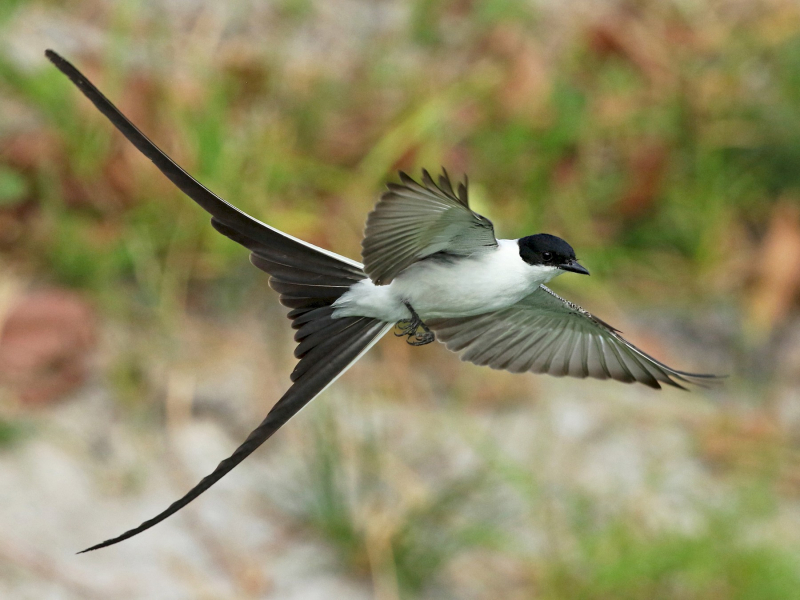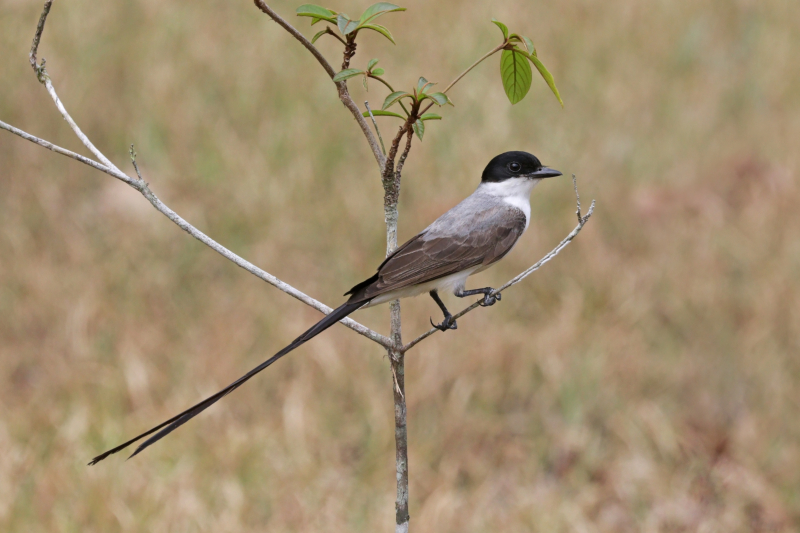Fork-Tailed Flycatcher
The Fork-Tailed Flycatcher (Tyrannus savana) is a passerine bird of the tyrant flycatcher family and is a member of a genus typically referred to as kingbirds. Fork-tailed flycatchers are found in places with light forest or grassland cover from southern Mexico to as far south as Argentina. They get their name from their distinctively long, forked tail. The majority of the time, they are seen sitting on prominent perches waiting for flying arthropods to fly by before sauntering out to catch their prey and heading back to their perches. While fork-tailed flycatchers that live further south are migrants with a reputation for wandering as far north as the Eastern Seaboard of the United States, northern populations close to southern Mexico appear to be permanent inhabitants.
The fork-tailed flycatcher has a black head and is white underneath and gray above. Sometimes, males exhibit a yellow head stripe. Additionally, males have a very long, forked tail that is even longer than that of the closely related scissor-tailed flycatcher. The tail is slightly shorter in females and much shorter in juveniles. Including the tail, males are 37–41 cm in length, while females measure 28–30 cm. They are substantially lighter than closely related kingbirds, which are twice as long as this species' entire length, weighing only 28–32 g. In comparison to the length of the bird from the base of the tail to the bill, the mature male's tail is two to three times longer. Generally, males and females of the species look quite similar but can be distinguished by the longer tail in males.












